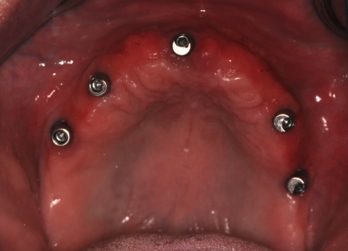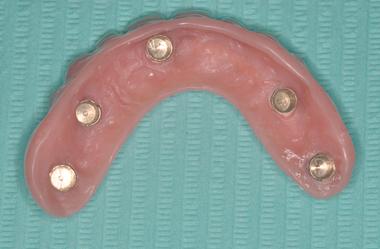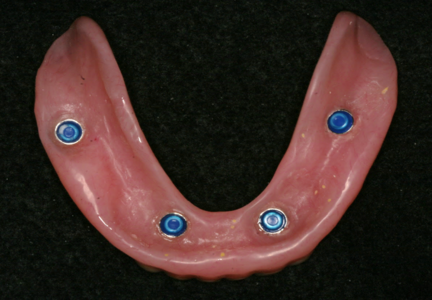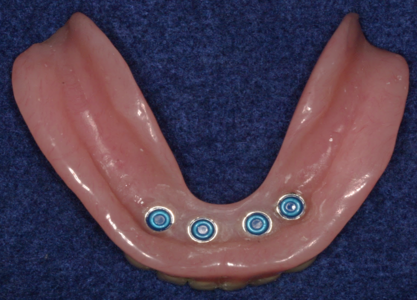Implant Supported Dentures
Many people that wear complete upper and lower dentures are unhappy with them. Upper dentures cover the palate and can cause gagging. Lower dentures can move constantly causing sore areas. The good news is that dentures retained by dental implants can solve this problem. Implant supported dentures provide tremendous support so eating, speaking, and smiling is more comfortable. If your dentures are secure and functioning properly and you can eat with no pain, then implants are not necessary. Patients with loose or painful dentures are great candidates for implant supported dentures. Since lower dentures are usually more of a problem than upper dentures Dr. Shannon recommends at least two lower dental implants to hold the lower denture so that it no longer “floats” around causing soreness and difficulty with chewing. When considering removable dentures involving implants there are options ranging from individual implant attachments, a bar overdenture, a new type of restoration called a conus denture and hybrid dentures. Hybrid dentures are screwed in the mouth and are not removed by the patient and is the option most like natural teeth. All options are reviewed below. The simplest and least expensive option involving implants would be individual locator attachments.
Lower Denture Individual Attachments
Lower dentures would require at least two implants to help hold it in place. More implants can be utilized but two is the minimum.
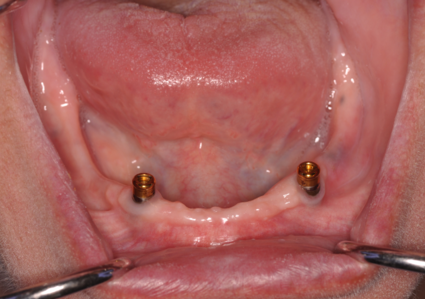
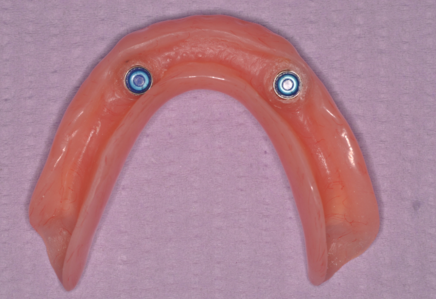
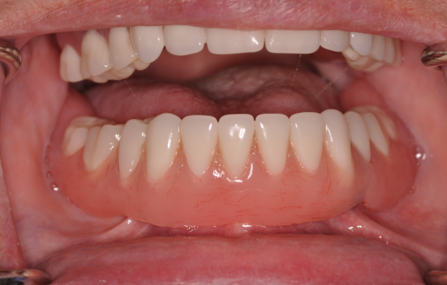
Two implants are placed in the front of the lower jaw usually by an oral surgeon. After approximately 4 months of healing the implants can then be used to secure the lower denture in place. A regular denture can and is usually worn during the healing period, so the patient is never without teeth. In approximately 4 months abutments (the gold cylinders) are placed on the implants and attachments (blue nylon snaps) are then installed inside the lower denture. The denture can then be snapped on the implants which helps keep the denture from moving and floating in the patient’s mouth. The implants also keep pressure off the tender lower tissues during biting of food when eating. The denture is not fixed in the mouth. It is removable by snapping it on and off of the implants.
Three implants can be utilized for more retention and support
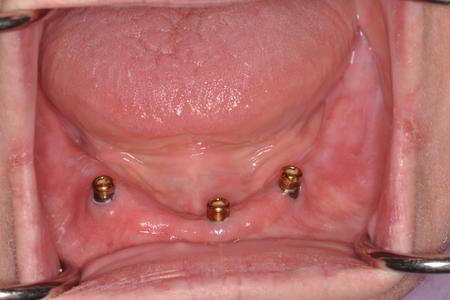
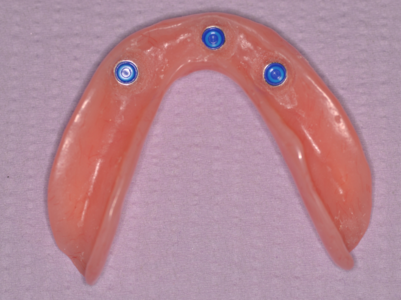
Four implants can be utilized for even more retention and support
Upper Denture Individual Attachments
For and upper denture the minimum number of implants is four. The minimum number of implants for a lower denture is only two. The difference is the type of bone that the upper and lower jaw consists of. Bone in the lower jaw is very dense and strong kind of like concrete. Bone in the upper jaw is much less dense and weaker kind of like Styrofoam. When a denture is connected to implants the forces of chewing and eating are transferred to the implants which are supported by the bone. Since the bone in the upper jaw is much weaker that the bone in the lower jaw more implants are needed to support an upper denture which is why more implants are required. A major advantage of an upper denture retained with implants is the palate can be open which helps greatly with patients that have a sensitive gag reflex. Also, some patients will report that they can taste their food better when the palate is not totally covered by the denture and can also speak better. Lastly an open palate allows less material making the denture smaller inside the mouth. Without implants retaining the upper denture an open palate is not an option as the palate being covered is necessary for the denture to gain suction to keep the denture in the mouth.
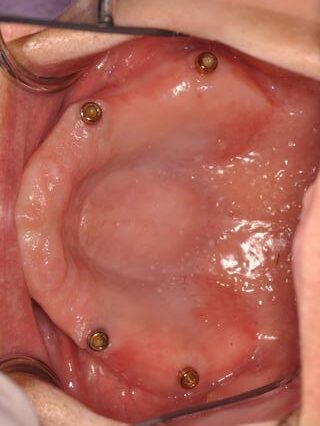
Upper jaw with 4 individual locator abutments 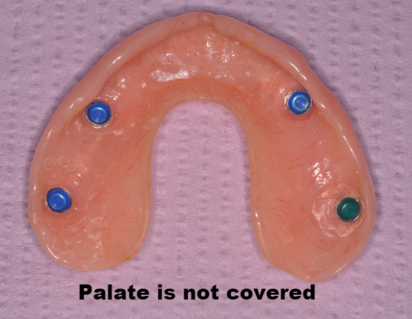
Upper denture with 4 individual locator attachments 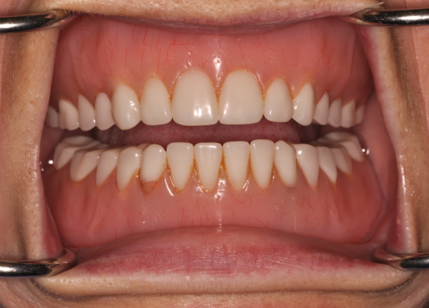
Upper denture securely attached to the implants in the mouth 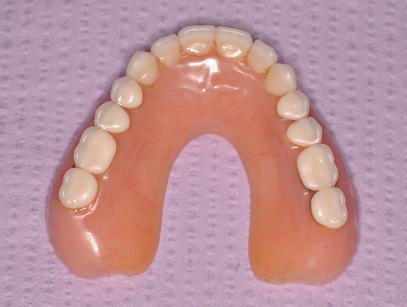
Upper denture showing the open palate
Bar Overdenture
For patients that want or require more support and retention than individual implant attachments can provide a bar that connects the implants together will provide more stability by fully supporting a denture that fits over the bar. With individual implant attachments there is still some support provided by the patient’s soft tissue. With a bar connecting the implants all support for the denture comes from the bar making the prosthesis very stable and non-movable. With this option 4-6 implants are required, and the denture still is removed from the mouth by the patient on a daily basis for general cleaning. The denture attaches to the bar via attachments that connect it to the bar very securely.
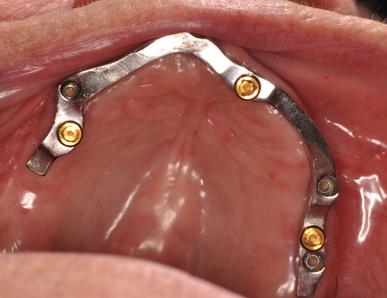
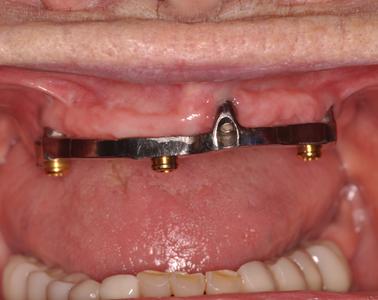
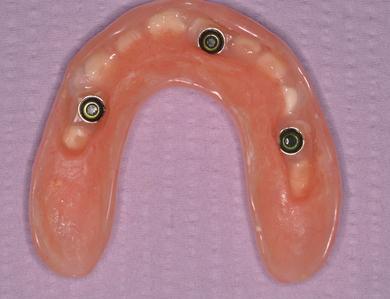
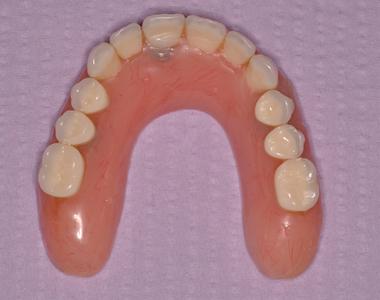
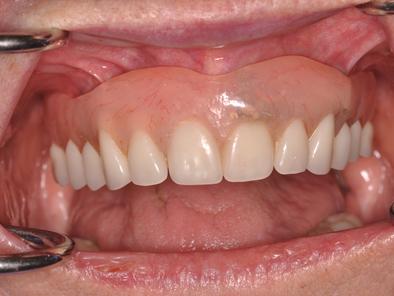
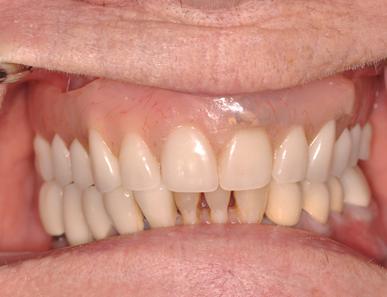
Conus Prosthesis
The conus denture is by far the latest and most stable of the removable denture options available today. It is also the lowest profile of any of the other removable denture options meaning less acrylic and bulk inside the mouth. This restoration requires 4-6 implants and utilizes morse taper cones that utilize friction to hold the denture in place. The conus denture provides the highest level of retention over any of the other removable options. Most patients have to work to get the denture out of the mouth. As with the bar overdenture option the entire prosthesis is supported by the implants. There is no tissue support at all so the denture is extremely stable and does not move once secured on the morse tapered cones.
